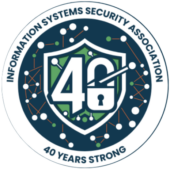
Overview
With digitalization, the online space has become a crucial platform for economic growth, allowing businesses and individuals to expand. However, this rapid transformation has also resulted in exploitation by malicious actors, leaving users, especially children and educational institutions, exposed to cyber threats.
When organizations utilize the internet, they face various threats, with social engineering being a primary concern. Social engineering involves manipulating individuals into disclosing confidential information, allowing attackers unauthorized access to systems and data.
An organization’s leadership must prioritize cybersecurity. According to Palo Alto’s State of Cybersecurity Report ASEAN 2022, 92% of organizations believe this should be a focus due to a rise in cyberattacks, with 50% experiencing significant disruptions. Such attacks harm reputations and can lead to financial losses and legal issues.
The Asia Foundation Report (2022) highlights the significant financial impact of cyberattacks in the Philippines, estimating damages at around USD 3.5 billion, with social engineering posing the greatest threats, particularly in educational technology (EdTech) and remote workplaces. Many employees lack cybersecurity training, making them vulnerable.
Furthermore, a UNICEF report reveals that children are increasingly targeted for online abuse, with victims ranging from ages five to fourteen. With over 60,000 schools in the Philippines, these institutions are particularly at risk, necessitating collaboration among school administrators, teachers, students, and parents. It’s essential to integrate cybersecurity awareness into curricula, establish educational policies, and conduct simulated drills to combat social engineering attacks effectively.
Moderator
Speaker/s
Mario B. Demarillas – Chief Information Security Officer (CISO), Head of IT Consulting and Software Engineering
Pending
Recent On-Demand Web Conferences
ISSA Webinars and Conference series cover all the continuing education credits to maintain your cyber security certifications. (CPEs, CEUs, ECE, etc). Each hour is equal to one continuing education credit. Certificates of completion are available upon request after completion. For instructions, click here.
